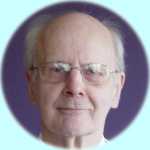

|
|
|
Updated on 01Jul2003 |
|
Bad Chair Days |
|
HOOKER'S ENGINES IN HAWKERS' AEROPLANES |
|
|
|
Ralph Hooper, busy man, was invited to give the 2003 Sir Stanley Hooker Memorial Address to the Bristol Branch of the Rolls-Royce Heritage Trust on March 24th. An audience of some 200, including the President and many illustrious names from R-R, heard Ralph's talk, "Hooker's Engines in Hawkers' Aeroplanes". Sir Stanley, or 'SGH' as he was known at R-R where it was the custom to refer to people by their initials, started at R-R, moved to Bristol Engines and after the R-R/Bristol amalgamation returned to Derby. He therefore influenced and led both Derby and Bristol engine developments. |
|
The Hunter was, of course, powered by the Avon; not an SGH design but one with which he was deeply involved during development. The Conway was considered for the P.1121 Mach 2 fighter but the Olympus was preferred and in any case the aircraft was never completed. |

|
Ralph Hooper |